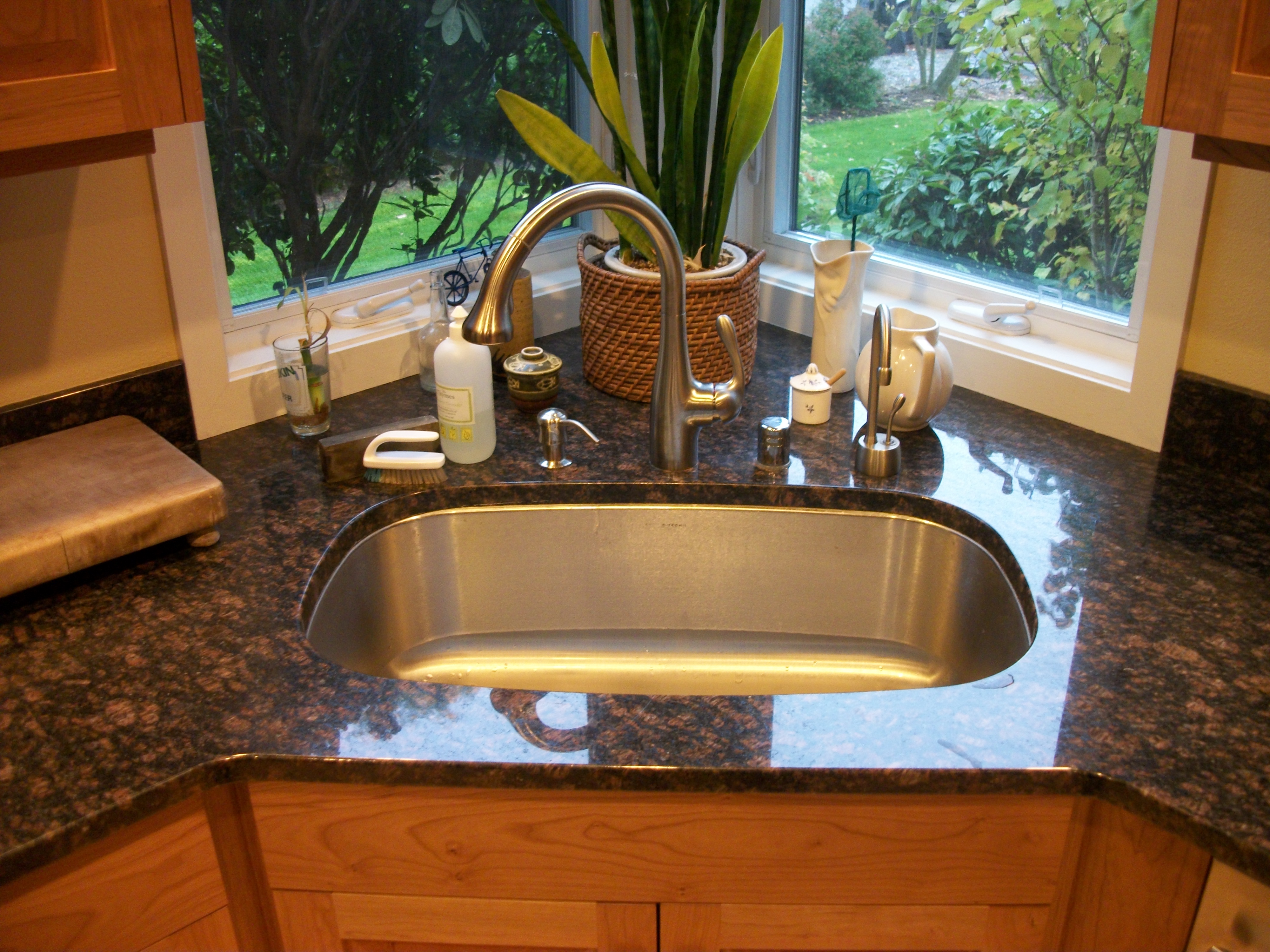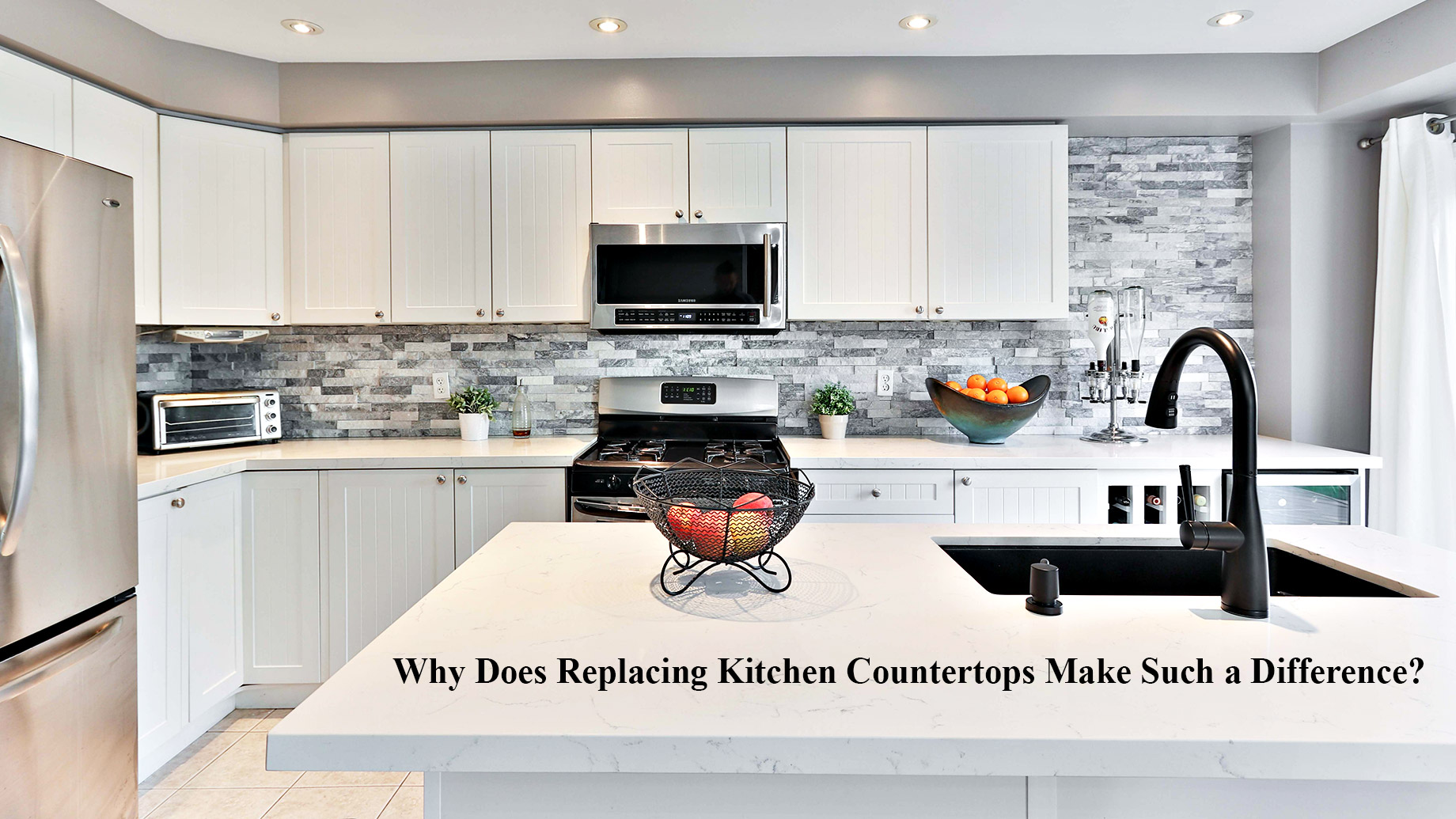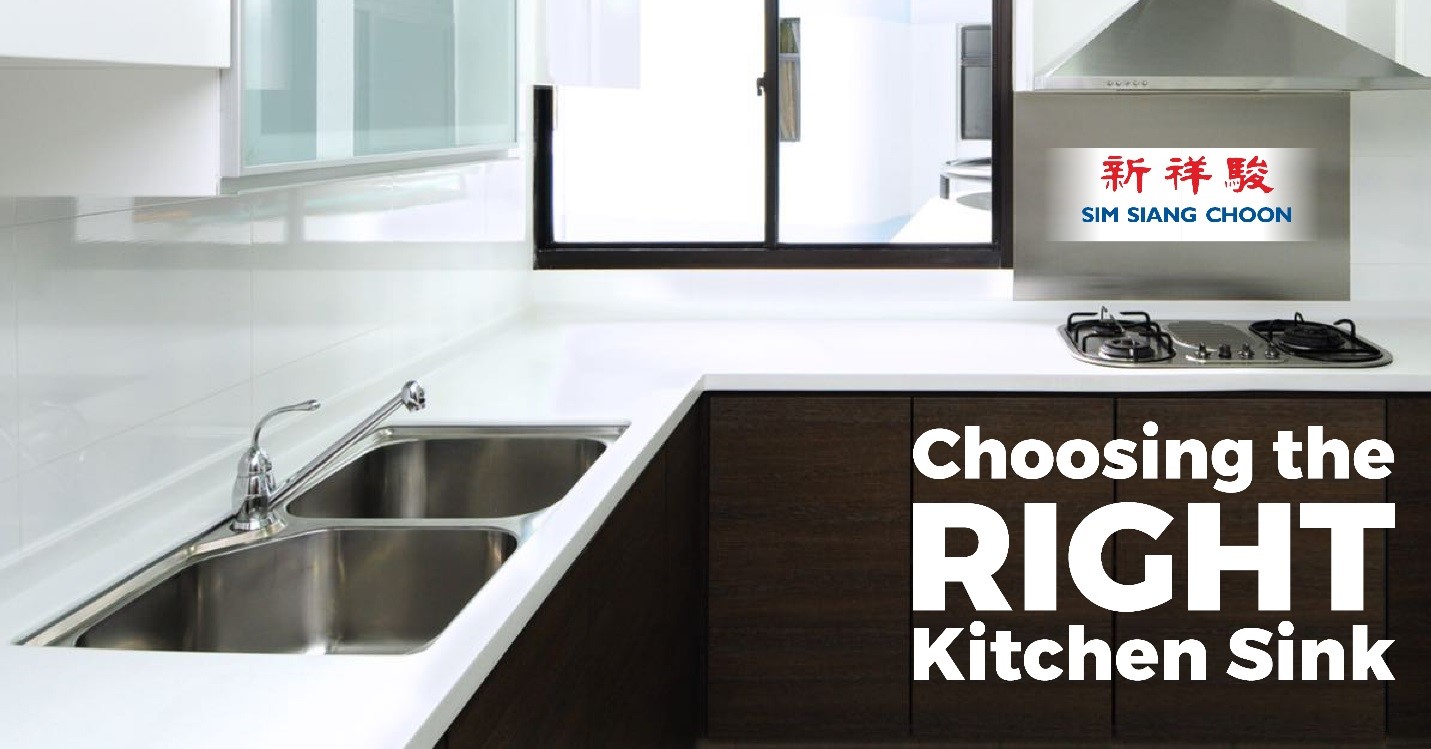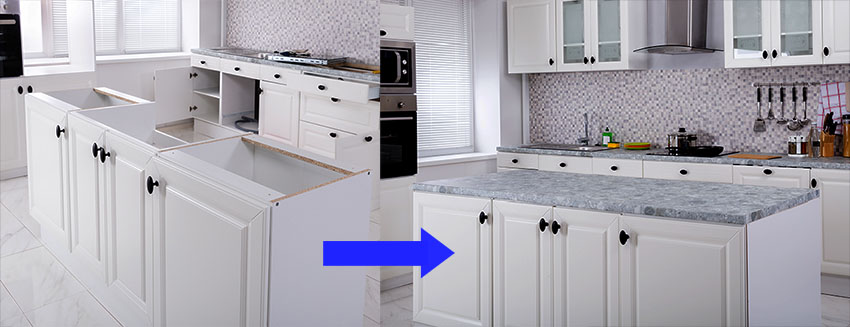1. How to Replace a Kitchen Countertop and Sink
If you're looking to give your kitchen a fresh new look, one of the best ways to do so is by replacing your old countertop and sink. Not only will it instantly update the aesthetic of your space, but it can also improve functionality and increase the value of your home. In this guide, we'll walk you through the steps of replacing a kitchen countertop and sink, so you can achieve the kitchen of your dreams.
2. DIY Kitchen Countertop Replacement
While hiring a professional may seem like the easiest option, replacing a kitchen countertop and sink is a project that can be done yourself with some basic tools and a little bit of know-how. This not only saves you money, but it also gives you the satisfaction of completing a home improvement project on your own. However, it's important to be realistic about your abilities and time constraints before deciding to take on this project.
3. Step-by-Step Guide for Replacing a Kitchen Countertop and Sink
Before diving into the project, it's important to have a plan in place. This includes choosing the right materials, measuring accurately, and having all the necessary tools on hand. Once you have everything you need, follow these steps:
Step 1: Start by turning off the water supply and disconnecting the plumbing from the sink.
Step 2: Remove the old countertop and sink carefully, being sure to protect any surrounding cabinets or walls.
Step 3: Measure and cut the new countertop and sink to fit your space.
Step 4: Install the new countertop and sink, securing them in place with adhesive and screws.
Step 5: Reconnect the plumbing and turn the water supply back on.
Step 6: Seal around the edges of the sink and countertop to prevent any leaks.
4. Tips for Choosing the Right Kitchen Countertop and Sink
When it comes to choosing the right materials for your new kitchen countertop and sink, there are a few factors to consider. First, think about your budget and how much you're willing to spend. Next, consider the style and aesthetic you're going for. Finally, think about the functionality and durability of the materials. Some popular choices for kitchen countertops and sinks include granite, quartz, marble, and stainless steel.
5. Cost of Replacing a Kitchen Countertop and Sink
The cost of replacing a kitchen countertop and sink can vary greatly depending on the materials chosen and the size of your kitchen. On average, homeowners can expect to spend between $2,000 and $4,000 for a complete replacement. However, if you choose to do it yourself, you can save significantly on labor costs.
6. Best Materials for Kitchen Countertops and Sinks
Choosing the right materials for your kitchen countertop and sink is essential for both aesthetics and functionality. Here are some of the best options to consider:
Granite: This natural stone is durable, heat-resistant, and adds a touch of luxury to any kitchen.
Quartz: Another popular choice, quartz is low-maintenance, stain-resistant, and comes in a wide variety of colors and patterns.
Marble: For a classic, elegant look, marble is a great option. However, it does require regular sealing to prevent stains.
Stainless Steel: A staple in commercial kitchens, stainless steel is durable, easy to clean, and adds a modern touch to any kitchen.
7. How to Measure for a New Kitchen Countertop and Sink
Accurate measurements are crucial when replacing a kitchen countertop and sink. Here's how to measure for a new one:
Step 1: Measure the length and width of your existing countertop and sink, including any overhangs or cutouts.
Step 2: Measure the distance from the back wall to the edge of the countertop where the sink will be placed.
Step 3: Measure the depth of the cabinets to determine the thickness of the countertop.
Step 4: Add 1 inch to each measurement to allow for any discrepancies.
8. Pros and Cons of Different Kitchen Countertop and Sink Options
As with any home improvement project, there are pros and cons to different materials for kitchen countertops and sinks. Here's a breakdown:
Granite: Pros - Durable, heat-resistant, adds value to your home. Cons - Can be expensive and requires regular sealing.
Quartz: Pros - Low-maintenance, stain-resistant, wide variety of colors and patterns. Cons - Can be expensive and less heat-resistant than granite.
Marble: Pros - Classic, elegant, adds value to your home. Cons - Can be expensive and requires regular sealing.
Stainless Steel: Pros - Durable, easy to clean, adds a modern touch. Cons - Can be noisy and show water spots.
9. Common Mistakes to Avoid When Replacing a Kitchen Countertop and Sink
Replacing a kitchen countertop and sink may seem like a simple project, but there are some common mistakes that homeowners make. Here are a few to avoid:
Not measuring accurately: As mentioned before, accurate measurements are crucial for a successful replacement.
Choosing the wrong materials: Consider your budget, style, and functionality needs before choosing materials.
Not sealing properly: To prevent leaks and damage, be sure to seal around the edges of the sink and countertop.
10. Hiring a Professional vs. DIY for Replacing a Kitchen Countertop and Sink
Deciding whether to hire a professional or tackle the project yourself ultimately depends on your abilities, budget, and time constraints. While hiring a professional can save you time and ensure a perfect installation, doing it yourself can save you money and give you a sense of accomplishment.
Now that you have a better understanding of how to replace a kitchen countertop and sink, you can confidently take on this project and transform the heart of your home. Remember to choose the right materials, measure accurately, and follow the proper steps for a successful installation. Happy renovating!
Why Replace Your Kitchen Countertop Sink?

Aesthetics and Functionality
 Replacing your kitchen countertop sink can have a significant impact on the overall look and functionality of your kitchen. Over time, sinks can become stained, scratched, and even cracked, making them an eyesore and hindering their purpose. By replacing your sink, you can not only refresh the appearance of your kitchen but also improve its functionality.
Kitchen countertop sinks
are essential for daily tasks such as washing dishes, food preparation, and even handwashing. A sink that is outdated or damaged can make these tasks more challenging and less enjoyable.
Upgrading your sink
can make these daily chores more efficient and pleasant, allowing you to fully enjoy your kitchen space.
Replacing your kitchen countertop sink can have a significant impact on the overall look and functionality of your kitchen. Over time, sinks can become stained, scratched, and even cracked, making them an eyesore and hindering their purpose. By replacing your sink, you can not only refresh the appearance of your kitchen but also improve its functionality.
Kitchen countertop sinks
are essential for daily tasks such as washing dishes, food preparation, and even handwashing. A sink that is outdated or damaged can make these tasks more challenging and less enjoyable.
Upgrading your sink
can make these daily chores more efficient and pleasant, allowing you to fully enjoy your kitchen space.
Increased Home Value
 Replacing your kitchen countertop sink can also have a positive impact on the value of your home. In today's competitive real estate market,
modern and updated kitchens
are highly sought after by potential buyers. By investing in a new sink, you can
increase the appeal
of your kitchen and potentially increase the value of your home.
Replacing your kitchen countertop sink can also have a positive impact on the value of your home. In today's competitive real estate market,
modern and updated kitchens
are highly sought after by potential buyers. By investing in a new sink, you can
increase the appeal
of your kitchen and potentially increase the value of your home.
Customization and Personalization
 When it comes to kitchen design, everyone has their own unique style and preferences. By replacing your sink, you have the opportunity to
customize and personalize
your kitchen to your liking. From choosing the material, color, and style of the sink, you can create a space that truly reflects your personality and taste.
When it comes to kitchen design, everyone has their own unique style and preferences. By replacing your sink, you have the opportunity to
customize and personalize
your kitchen to your liking. From choosing the material, color, and style of the sink, you can create a space that truly reflects your personality and taste.
Improved Hygiene
 Old and worn-out sinks can harbor bacteria and germs, making them a potential health hazard. By replacing your sink, you can ensure a
clean and hygienic
space for food preparation and handwashing. Additionally, newer sinks often have features such as touchless faucets or antimicrobial surfaces, making them even more sanitary.
Old and worn-out sinks can harbor bacteria and germs, making them a potential health hazard. By replacing your sink, you can ensure a
clean and hygienic
space for food preparation and handwashing. Additionally, newer sinks often have features such as touchless faucets or antimicrobial surfaces, making them even more sanitary.
Cost-Effective Solution
 Replacing your entire kitchen may not be feasible or within your budget, but replacing your sink can be a
cost-effective solution
to give your kitchen a facelift. Sink replacements can range from a few hundred dollars to a few thousand, depending on the material and features chosen. Compared to a full kitchen renovation, this is a much more budget-friendly option.
Replacing your entire kitchen may not be feasible or within your budget, but replacing your sink can be a
cost-effective solution
to give your kitchen a facelift. Sink replacements can range from a few hundred dollars to a few thousand, depending on the material and features chosen. Compared to a full kitchen renovation, this is a much more budget-friendly option.
Final Thoughts
 In conclusion, replacing your kitchen countertop sink is a
worthwhile investment
for both the aesthetics and functionality of your kitchen. It can also
increase the value
of your home and allow for customization and personalization. With the added benefits of improved hygiene and cost-effectiveness, it's clear that upgrading your sink is a smart choice for any homeowner looking to refresh their kitchen space.
In conclusion, replacing your kitchen countertop sink is a
worthwhile investment
for both the aesthetics and functionality of your kitchen. It can also
increase the value
of your home and allow for customization and personalization. With the added benefits of improved hygiene and cost-effectiveness, it's clear that upgrading your sink is a smart choice for any homeowner looking to refresh their kitchen space.
















:max_bytes(150000):strip_icc()/Epoxy-DIY-Countertops-Via-Smallspaces.about.com-56d33a003df78cfb37d23f47.jpg)







































/120045890-56a527615f9b58b7d0db2c03.jpg)





















:max_bytes(150000):strip_icc()/Basic-kitchen-sink-types-1821207_color_rev-0b539306b9ef4236a136624ad2a89a4c.jpg)















/kitchen-cabinets-reface-vs-replace-1821042-hero-1691b361cf2f4dffb83913489cb711d0.jpg)








